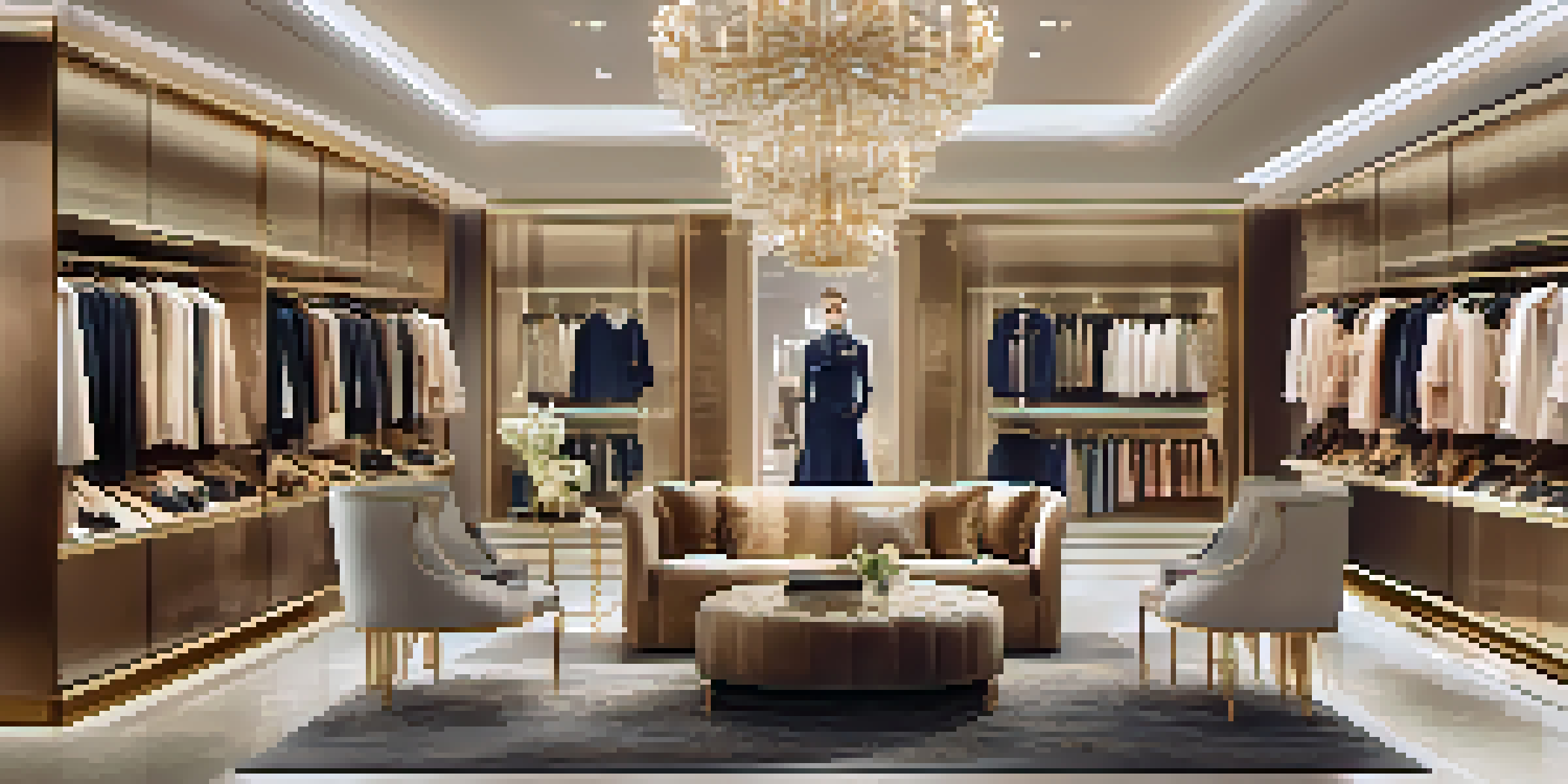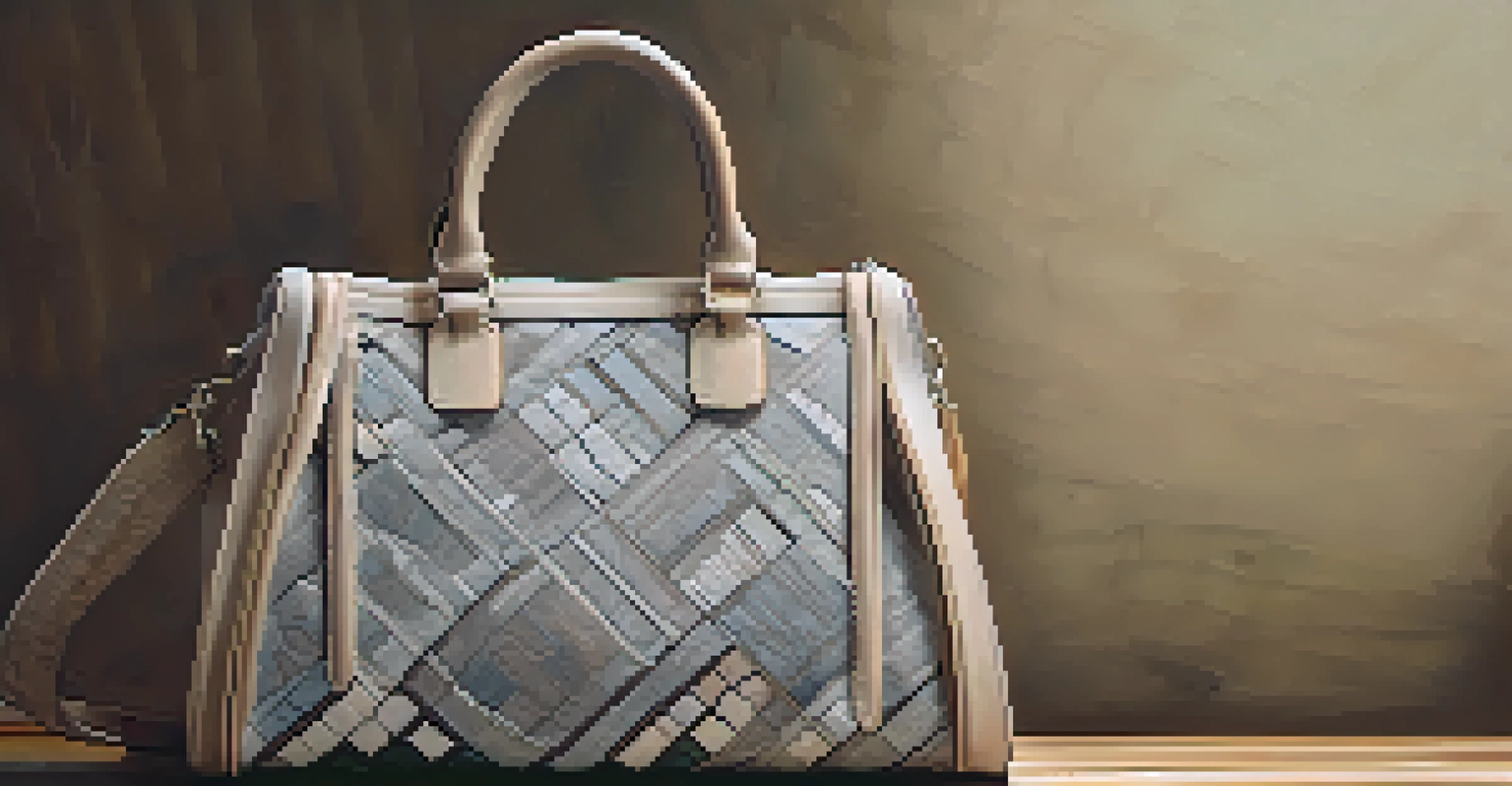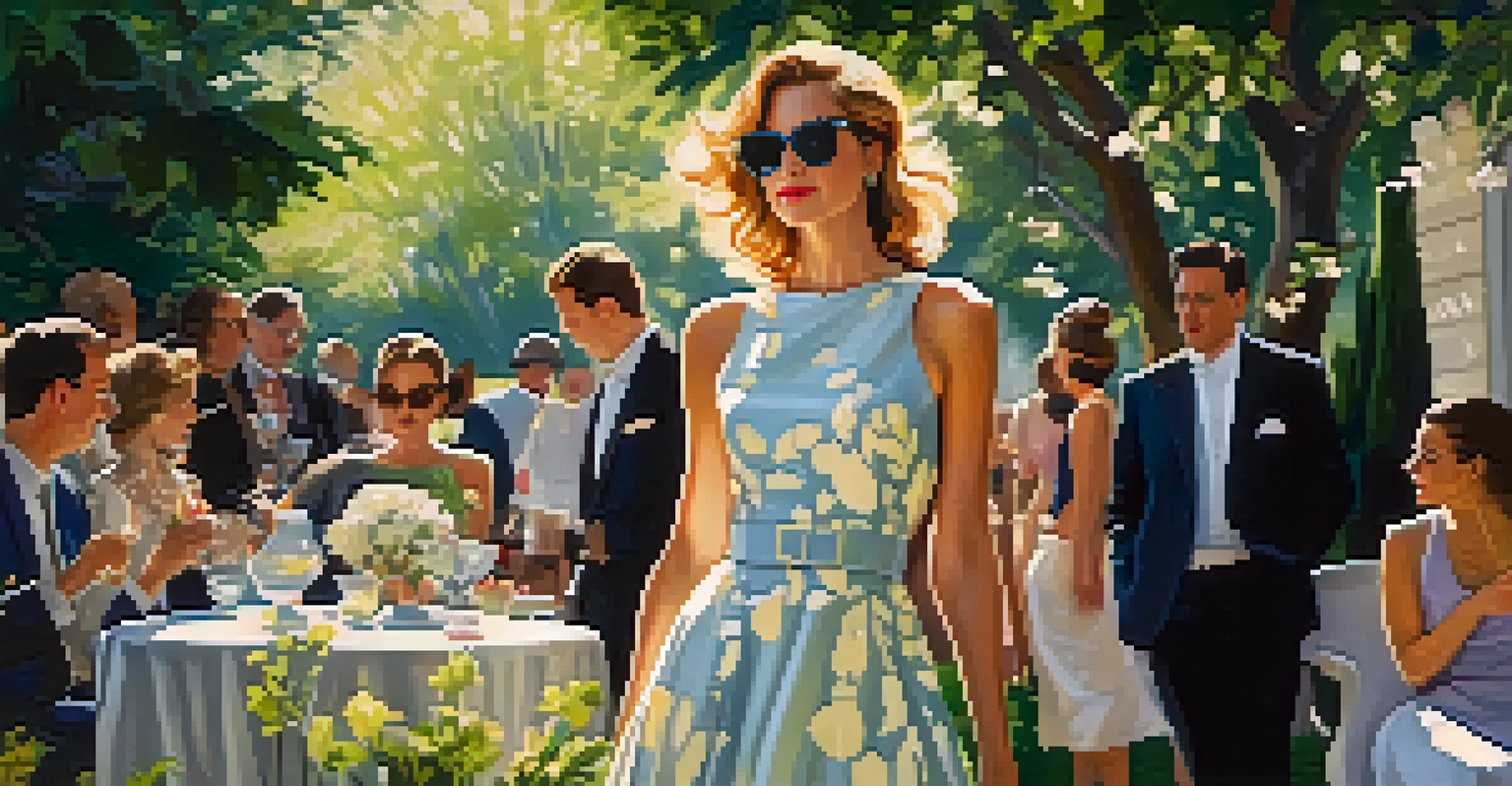The Impact of Digital Media on Luxury Fashion Marketing Strategies

Understanding the Shift in Luxury Fashion Marketing
Luxury fashion marketing has undergone a significant transformation thanks to digital media. Traditionally, brands relied heavily on print advertisements and exclusive events to reach their audience. However, the rise of digital platforms has opened new avenues for engagement and connection with consumers, allowing brands to tell their stories in innovative ways.
In the world of luxury fashion, storytelling is key to engaging customers and creating lasting relationships.
This shift means that luxury brands now need to embrace a more dynamic marketing approach. Instead of merely showcasing products, they must also create immersive experiences that resonate with their audience. For example, storytelling through social media or interactive websites can cultivate a deeper connection between the brand and its consumers.
Related Resource
In essence, the luxury fashion market is no longer just about selling products; it's about creating a lifestyle. By leveraging digital media, brands can craft narratives that embody their values and aesthetics, making it essential for them to adapt to this evolving landscape.
The Role of Social Media in Luxury Fashion Marketing
Social media platforms have become pivotal in the marketing strategies of luxury brands. Instagram, for instance, allows brands to showcase their collections visually and engage directly with their audience. With millions of users scrolling through their feeds daily, the potential for exposure is enormous, making social media an indispensable tool for luxury fashion marketing.

Moreover, social media provides an opportunity for brands to receive immediate feedback from their audience. This two-way communication fosters a sense of community and loyalty among consumers. Brands can host interactive sessions, such as Q&As or virtual fashion shows, which invite their followers to participate and feel included in the brand's journey.
Digital Transformation in Luxury Fashion
Luxury fashion marketing has evolved from traditional methods to embracing digital platforms for deeper consumer engagement.
Additionally, influencer partnerships have emerged as a key strategy within this space. Collaborating with fashion influencers can enhance a brand's visibility and credibility, tapping into their established audiences and creating authentic connections that traditional advertising simply cannot achieve.
Embracing E-commerce and Online Shopping Trends
The rise of e-commerce has drastically changed how luxury fashion brands operate. Consumers now expect an effortless online shopping experience, mirroring the luxurious in-store experience. Brands are investing in high-quality websites and mobile apps that reflect their identity while ensuring a seamless purchase journey for their customers.
Sustainability is not a trend; it is the new standard for luxury brands that want to thrive in the modern marketplace.
Moreover, the digital shopping experience allows for personalization, which is crucial for luxury brands. Utilizing data analytics, brands can tailor recommendations based on browsing history and preferences, creating a unique shopping experience that makes consumers feel valued. This level of customization helps bridge the gap between online and offline shopping.
Related Resource
As a result, luxury brands that embrace e-commerce as part of their marketing strategy can expand their reach and cater to a global audience. By providing top-notch online services, they can ensure that their consumers enjoy the same exclusivity and luxury that they expect in physical stores.
The Influence of User-Generated Content
User-generated content (UGC) has emerged as a powerful marketing tool for luxury fashion brands. When customers share their experiences wearing a brand's products on social media, it creates authenticity and relatability that traditional advertising often lacks. This organic promotion can significantly influence potential buyers who trust the opinions of their peers more than curated brand messages.
Furthermore, UGC allows brands to showcase their products in real-life settings, providing context that resonates with consumers. For instance, a customer wearing a designer dress at a wedding tells a story that a conventional advertisement cannot. This connection adds a layer of emotional engagement that can drive purchasing decisions.
Social Media's Impact on Brands
Social media serves as a crucial tool for luxury brands, fostering community and enhancing visibility through direct interaction.
Luxury brands can encourage UGC by creating campaigns that invite consumers to share their moments with specific hashtags. This not only generates valuable content but also fosters a sense of community among brand enthusiasts, enhancing customer loyalty in the process.
Leveraging Data Analytics in Marketing Strategies
Data analytics has become an integral part of luxury fashion marketing strategies. By analyzing consumer behavior, brands can gain insights into preferences and trends, allowing them to tailor their offerings accordingly. This data-driven approach helps brands make informed decisions about product launches and marketing campaigns, ultimately leading to better engagement.
For example, luxury brands can track which products are most popular on their websites or social media platforms, enabling them to focus their marketing efforts on these items. Additionally, understanding demographic information allows brands to target their advertising more effectively, ensuring that their messages reach the right audience.
Related Resource
Moreover, data analytics can enhance customer service by identifying potential issues before they escalate. By monitoring feedback and engagement metrics, brands can adjust their strategies in real-time, ensuring that they remain aligned with consumer expectations and preferences.
Creating Immersive Digital Experiences
In the digital age, luxury brands are increasingly focused on creating immersive online experiences for their customers. Virtual reality (VR) and augmented reality (AR) are two technologies that are revolutionizing how consumers interact with luxury products. These tools allow customers to virtually try on clothes or visualize how products fit into their lives, providing an interactive shopping experience.
For instance, some luxury brands have launched AR apps that let users see how a handbag or pair of shoes would look on them without stepping into a store. This level of engagement not only enhances the shopping experience but also builds excitement around the brand's offerings.
Sustainability Drives Consumer Choices
Luxury brands are increasingly focusing on sustainability in their marketing strategies to align with consumer values and preferences.
By investing in these cutting-edge technologies, luxury fashion brands can differentiate themselves in a crowded market. Providing customers with memorable and unique experiences can foster brand loyalty, encouraging repeat purchases and long-term relationships.
Sustainability and Ethical Marketing in Luxury Fashion
Sustainability has become a significant focus in the luxury fashion industry, influencing marketing strategies as companies strive to align with consumer values. As more consumers prioritize ethical practices, luxury brands are responding by highlighting their commitment to sustainability in their marketing efforts. This includes showcasing eco-friendly materials, ethical sourcing, and transparent production processes.
By leveraging digital media, brands can effectively communicate their sustainability efforts to a broader audience. Social media campaigns that spotlight eco-friendly initiatives resonate well with consumers who are increasingly concerned about environmental impact. This transparency not only attracts new customers but also strengthens brand loyalty among existing ones.

Ultimately, integrating sustainability into luxury fashion marketing not only meets consumer demand but also positions brands as leaders in responsible fashion. This alignment with values creates an emotional connection, allowing brands to stand out in a market that is becoming increasingly conscious of its impact on the world.